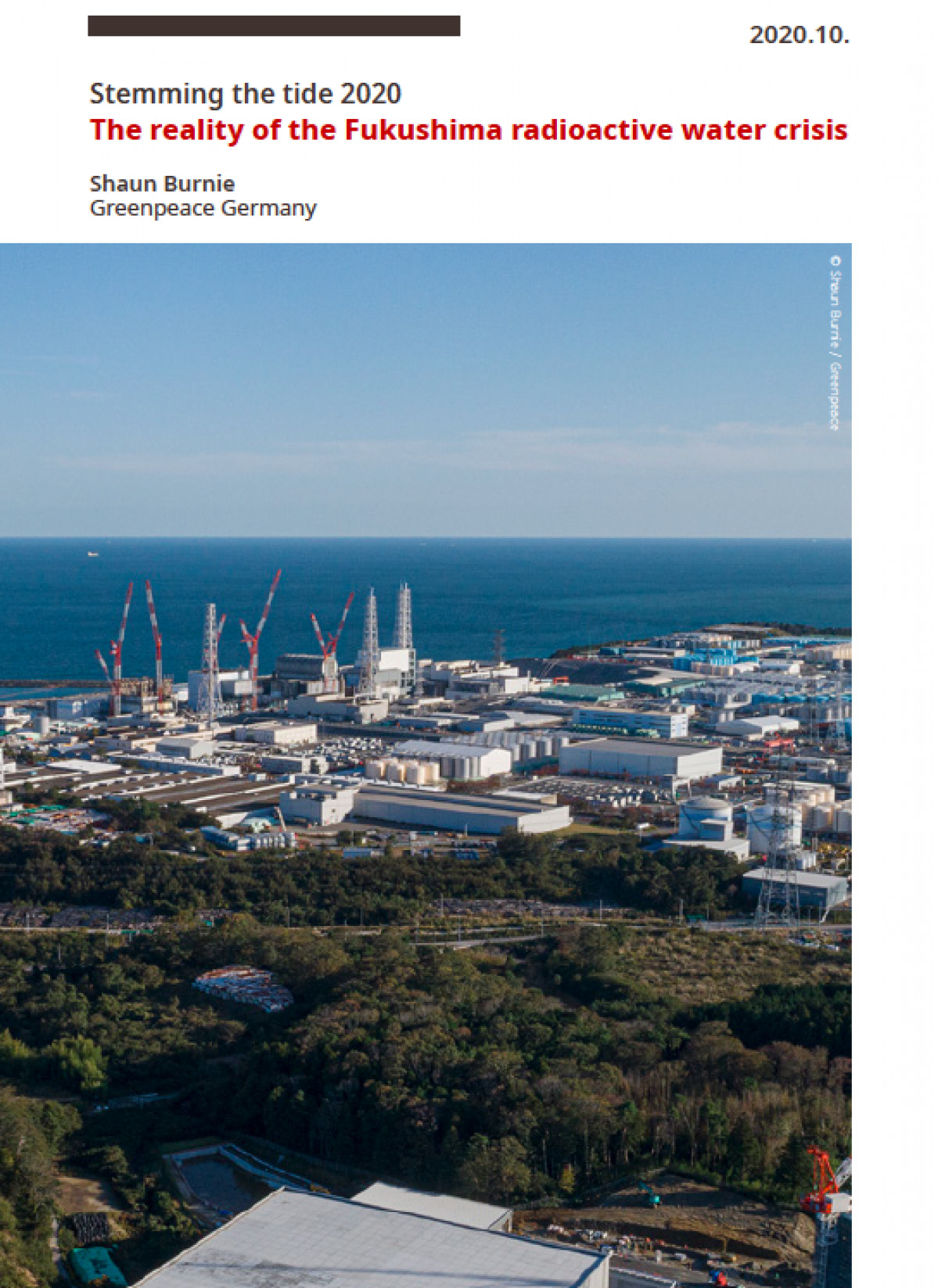Fukushima radioactive carbon-14 - investigation by Greenpeace

Tokyo, 23 October 2020 – All of the radioactive carbon contained in water tanks at Fukushima Daiichi will be discharged into the Pacific Ocean if Japanese government plans proceed, a new investigation by Greenpeace Japan and Greenpeace East Asia has concluded. The radioactive isotope carbon-14 has a half life of 5,370 years. As a result it persists in the environment over thousands of years and is incorporated into all living matter. It concentrates in fish at a level thousands of times higher than tritium. Carbon-14 is especially important as a major contributor to collective human radiation dose and has the potential to damage human DNA.[1]
The Japanese government and TEPCO have continued to call the 1.23 million tons of water stored in tanks “treated water” and to give the impression that it only contains tritium. The Greenpeace Japan and Greenpeace East Asia’s report, “Stemming the Tide 2020: The reality of the Fukushima radioactive water crisis,” details the reality of the contaminated water crisis at the Fukushima nuclear plant, including the fact confirmed by TEPCO that its Multi-nuclide Removal Facility (ALPS) at the nuclear plant was not designed to remove carbon-14.[2] A decision by the Japanese government to discharge into the Pacific is expected soon.
“Nearly ten years after the start of the disaster, TEPCO and the Japanese government are still covering up the scale of the crisis at Fukushima Daiichi. They have deliberately held back for years detailed information on the radioactive material in the contaminated water. They have failed to explain to the citizens of Fukushima, wider Japan and to neighboring countries such as South Korea and China that the contaminated water to be dumped into the Pacific Ocean contains dangerous levels of carbon-14. These, together with other radionuclides in the water will remain hazardous for thousands of years with the potential to cause genetic damage. It’s one more reason why these plans have to be abandoned,” said Shaun Burnie, author of the report and senior nuclear specialist with Greenpeace Germany.
The Greenpeace report also includes analysis on the decision by TEPCO to not use best available processing technology (BAT) from U.S. water company, Purolite. Despite demonstrating its ability to reduce concentrations of radioactivity to non detectable levels, TEPCO opted for ALPS technology operated by the inexperienced Toshiba and Hitachi corporations. The failure of ALPS is a consequence of repeated bad decision making, according to the report. The report also explains the Japanese government’s own analysis that shows storing the water beyond 2022 and for the long term at the site and off site is possible.[3]
“The Japanese government and TEPCO have constructed a series of myths in an attempt to justify their dumping plans. There is no technical, engineering or legal barrier to securing additional storage space for ALPS-treated contaminated water. It is a matter of political will. But the decision by the government to dismiss the storage option is based on expediency – the least expensive option is to discharge into the Pacific Ocean. The policy of the Japanese government to dump nuclear waste into the Pacific Ocean is not based on scientific or environmental protection principles and has no justification,” said Burnie.
[1] Carbon-14 is a major contributor to global human collective dose over time, and doses in an exposed population can be converted into the corresponding number of health effects. According to the French nuclear safety institute, IRSN, carbon-14 is integrated in cellular components, such as proteins and nucleic acids, particularly in cellular DNA and the resulting, “DNA damage may lead to cell death or potentially inheritable mutations.” See Radionuclide fact sheet Carbon-14 and the environment & quot;, August 2012 https://www.irsn.fr/EN/Research/publications-documentation/radionuclides-sheets/environment/Pages/carbon14-environment.aspx
[2] On 27 August 2020, TEPCO posted a document that acknowledged for the first time that the presence of carbon-14 was a significant contributor to the overall beta radiation measurements of contaminated tank water.TEPCO, “ALPS-Treated Water> Updated Data for Storage Amounts broken down by the Sum of Ratios for Concentrations Required by Law”, 27 August 2020, see https://www4.tepco.co.jp/en/decommission/progress/watertreatment/images/200827.pdf
[3] METI, “The Subcommittee on Handling of the ALPS Treated Water Report” 10 February 2020 (Provisional Translation), see https://www.meti.go.jp/english/earthquake/nuclear/decommissioning/pdf/20200210_alps.pdf
Powered by Froala Editor
